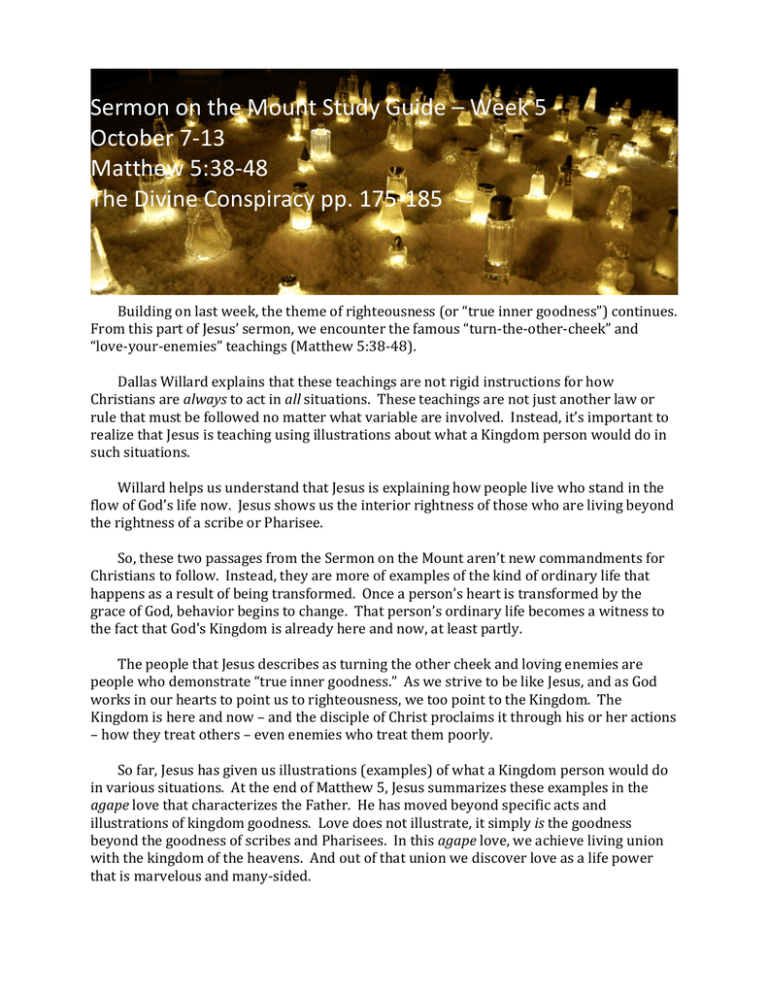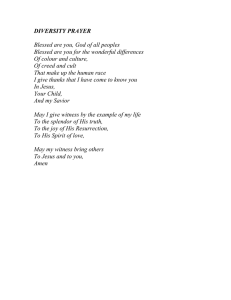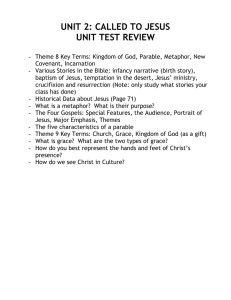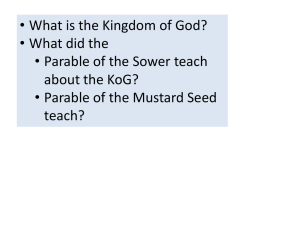Document 14396647
advertisement

Sermon on the Mount Study Guide – Week 5 October 7-­‐13 Matthew 5:38-­‐48 The Divine Conspiracy pp. 175-­‐185 Building on last week, the theme of righteousness (or “true inner goodness”) continues. From this part of Jesus’ sermon, we encounter the famous “turn-­‐the-­‐other-­‐cheek” and “love-­‐your-­‐enemies” teachings (Matthew 5:38-­‐48). Dallas Willard explains that these teachings are not rigid instructions for how Christians are always to act in all situations. These teachings are not just another law or rule that must be followed no matter what variable are involved. Instead, it’s important to realize that Jesus is teaching using illustrations about what a Kingdom person would do in such situations. Willard helps us understand that Jesus is explaining how people live who stand in the flow of God’s life now. Jesus shows us the interior rightness of those who are living beyond the rightness of a scribe or Pharisee. So, these two passages from the Sermon on the Mount aren’t new commandments for Christians to follow. Instead, they are more of examples of the kind of ordinary life that happens as a result of being transformed. Once a person’s heart is transformed by the grace of God, behavior begins to change. That person’s ordinary life becomes a witness to the fact that God’s Kingdom is already here and now, at least partly. The people that Jesus describes as turning the other cheek and loving enemies are people who demonstrate “true inner goodness.” As we strive to be like Jesus, and as God works in our hearts to point us to righteousness, we too point to the Kingdom. The Kingdom is here and now – and the disciple of Christ proclaims it through his or her actions – how they treat others – even enemies who treat them poorly. So far, Jesus has given us illustrations (examples) of what a Kingdom person would do in various situations. At the end of Matthew 5, Jesus summarizes these examples in the agape love that characterizes the Father. He has moved beyond specific acts and illustrations of kingdom goodness. Love does not illustrate, it simply is the goodness beyond the goodness of scribes and Pharisees. In this agape love, we achieve living union with the kingdom of the heavens. And out of that union we discover love as a life power that is marvelous and many-­‐sided. Discussing the Text: 1. In this passage, Jesus directly quotes three passages from the Torah a. Exodus 21:24 b. Leviticus 24:20 c. Deuteronomy 19:21 Discuss how Jesus explains the heart of these Old Testament texts. Last week we used the terms “Old Dikaiosune” and “Kingdom Dikaiosune” (Dikaiosune means rightness). 2. Matthew 5:45 tells us that God causes the sun to rise over both evil and good people, and God sends rain on both righteous and unrighteous. Talk about how this affects our understanding of God’s providence and care in the world. a. Going further: What does this indicate about God’s love? Discussing the World: 1. The illustrations of Matthew 5:20 and following are examples of kingdom goodness and agape love. But Jesus moves beyond illustrations because they are temptation for legalism (“do it this way”). Talk about legalisms and illustrations that get us hung up today. 2. Jesus said, “pray for those who persecute you, that you maybe children of your Father in heaven.” a. How does prayer change the way we feel about someone? b. Talk about experiences you have with praying for those we don’t like. 3. What does it look like today to “turn the other cheek”? a. When someone is unjustly unkind to you? b. When someone cuts in line? Or when someone cuts you off in traffic… c. When someone spreads rumors about you? Action: Consider the Spiritual Discipline of Witness • The purpose of witness is to reveal the life-­‐changing love of Jesus to others • It involves serving others, even those you may not like. • Intentionally engage with people of different beliefs. • Witness is not simply an ability to explain the good news. It is the way you live the good news.








